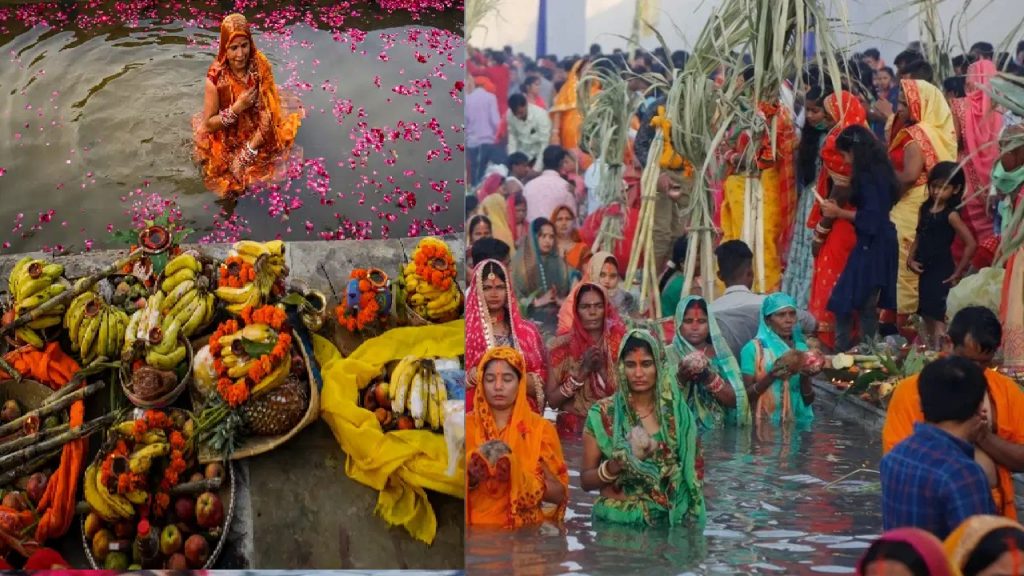New Delhi: As the vibrant and fervent celebrations of Chhath Puja enter its second day, markets across Delhi, UP and Bihar are abuzz with devotees buying goods for the Puja. Across the markets of Delhi, especially in areas like Sonia Vihar, and Varanasi in UP, stalls are lined with fresh fruits, sweets, and other puja essentials, all meticulously arranged for the rituals.
The second day of the four-day-long Chhath Puja is marked by the pivotal ‘Kharna’ Puja — a day when devotees, particularly Chhath vrati (the main individual performing the puja) observe a strict fast without food and water, before performing key rituals to honour Lord Surya, the Sun God.
On this second day, ‘Parvaitins’—the women who observe the fast—will prepare a special offering called ‘Rasiyaw’ or ‘Kheer.’ For this day, the house is thoroughly cleaned and purified. After bathing, the devotee wears new clothes and offers prayers. Following this, preparations for the puja begin. Kharna prasad is prepared by burning mango wood in a traditional earthen stove. The prasad consists of kheer made with milk, rice, and jaggery.
Roti is also made to go with it. First, this prasad is offered to Chhathi Maiya, and then the devotee consumes it for Kharna. Afterwards, the prasad is distributed among all the family members and seekers of blessings. Chhath Puja, celebrated mainly in Bihar, Jharkhand, Uttar Pradesh, and Nepal, is dedicated to Lord Surya, revered as the deity that bestows prosperity, vitality, and spiritual well-being upon his devotees.
The festival’s unique rituals blend devotion, discipline, and deep reverence for nature, especially the Sun and water, symbolising life and health. For the devotees, the four-day festival represents more than just a religious observance—it’s a time for familial bonding and a call for the well-being of their loved ones. Many women observe these fasts for the health and prosperity of their children, offering prayers and rituals for their happiness and success in life. Beyond its religious and cultural significance, Chhath Puja also carries an ecological message.
The festival’s connection to water resources is profound, as devotees gather near rivers, ponds, or other water bodies to offer prayers and perform rituals. The reverence for nature and the Sun is woven into the fabric of Chhath, symbolising the balance between humanity and the environment.
